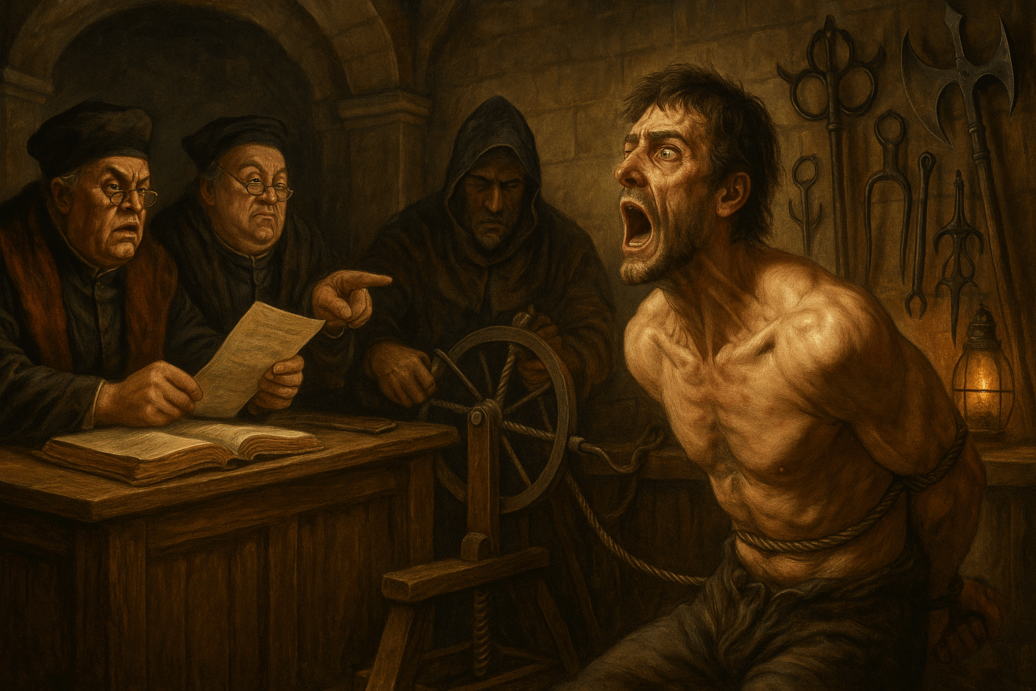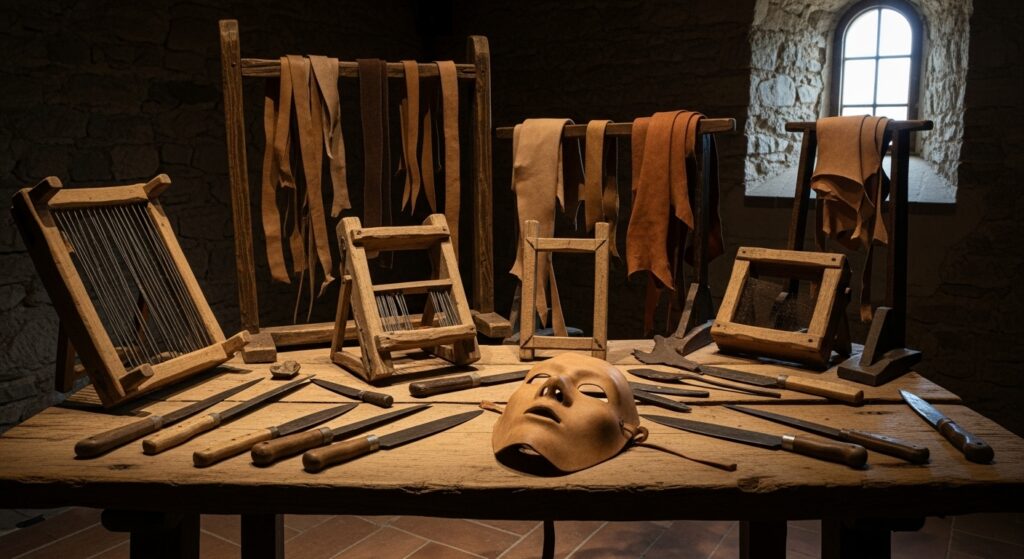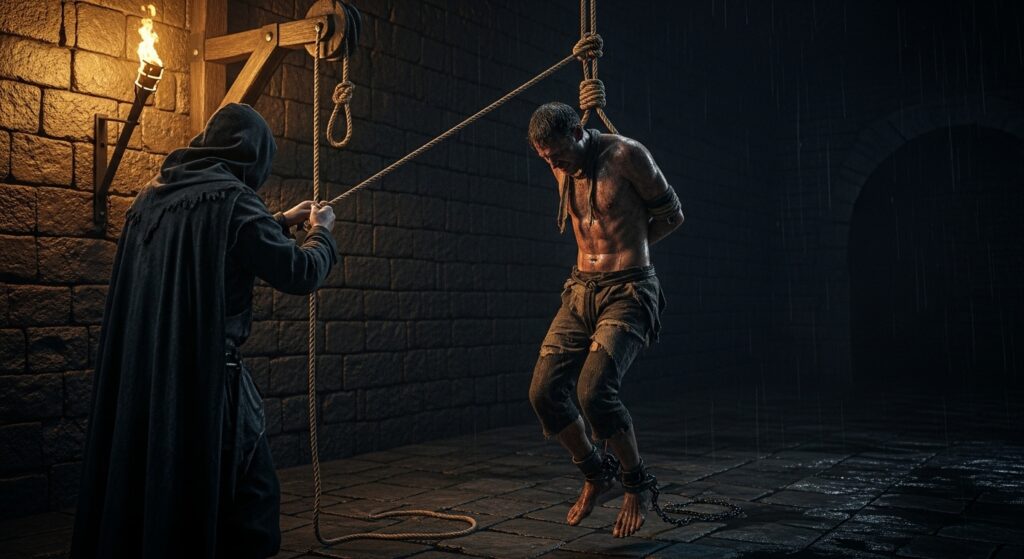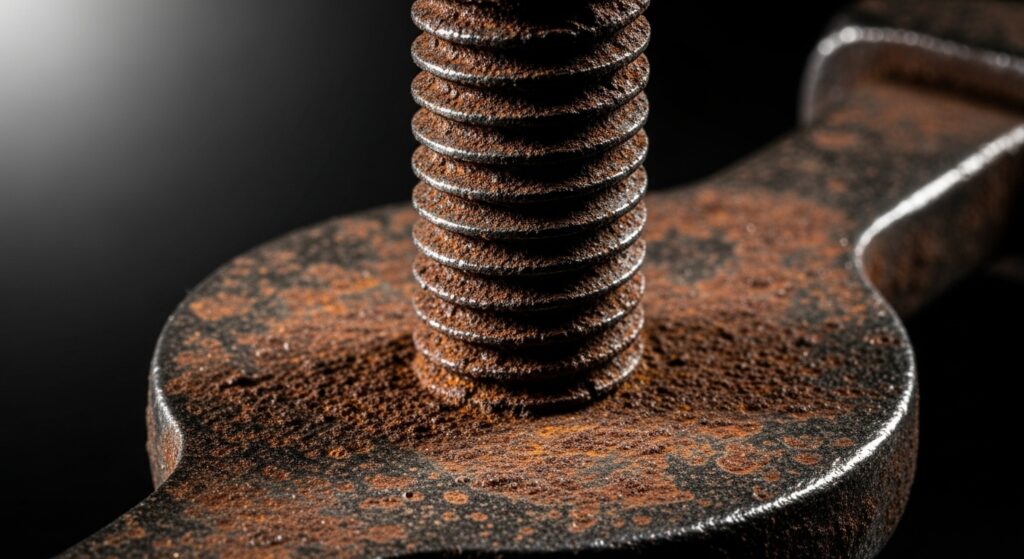Imagine stepping into a dim medieval hall where trials begin not with evidence, but with the clang of manacles. Under flickering torches, authority is absolute, and “truth” is something squeezed-sometimes literally-out of the accused. Welcome to the medieval justice system, a realm where coercion was policy, sentencing was spectacle, and torture turned the scales of guilt and innocence.
Why Torture Became a Legal Tool
To understand why torture was used in justice systems, we need to trace the era’s mindset. Clergy taught that pain purified the soul; rulers believed agony exposed lies; common folk saw suffering as divine judgment. Judges-often corrupt-leveraged cruelty to keep order, accelerate verdicts, and, not least, extract treasure from the condemned. The courtroom blurred into the dungeon, paving the way for inquisitions and forced confessions that fueled centuries of injustice.
Falsified Evidence and Corrupt Judges
What happens when the very guardians of law fabricate proof? Examples of judicial corruption abound: forged ledgers, swapped testimonies, even planted daggers still warm with staged blood. How evidence was falsified in history ranged from simple deception (editing parchments) to elaborate theater-actors posing as “holy witnesses.” If a defendant protested, torturers would “refresh” their memory until a neat confession emerged. Such practices illustrate what is judicial corruption at its darkest: officials twisting reality to keep power, profit, or favor.
Famous Cases of Torture‑Based Convictions
- The Iron Merchant (1382): Accused of coin clipping, he survived three sessions on the rack yet “confessed” after his children were threatened. Modern historians uncovered forged scales hidden by the bailiff-proof of falsified evidence.
- The Widow of Rouen (1461): Labeled a witch after crop failures, she endured branding irons. Under agony, she named twenty “accomplices,” leading to a domino of torture-based convictions. Later archives revealed all charges were concocted by a rival landowner.
These tales show how medieval torture methods weren’t just punishment; they were engines of systemic suppression.
The Mechanics of Fearmongering
Corrupt magistrates weaponized fear. Public floggings bred compliance; rumors of hidden prisons kept peasants silent. This widespread fearmongering magnified the court’s power. Once a judge signaled torture, the accused felt domination long before iron met flesh. Silence, ironically, was seen as guilt, so the cycle spun on.
Interactive Thought Experiment
Close your eyes. Could you prove innocence if a red‑hot bar hovered inches from your skin? Under tyranny, truth fades; pain speaks louder. This tension drives visitors to our exhibits, prompting them to question modern justice. If such horrors once passed as lawful, what blind spots exist today?
From Darkness to Discovery-Museum Connections
Want a tangible glimpse? Explore the Iron Maiden and “evidence room” displays among the popular things to do in Chicago at the Medieval Torture Museum in Chicago. On the West Coast, the Medieval Torture Museum in LA immerses guests in a recreated tribunal chamber where audio re‑enactments echo real interrogations. Heading south? Pair sun‑soaked streets with chills inside the Medieval Torture Museum in St Augustine to witness a rare “guilt chair”-its leather straps still imprinted with nail marks.
Recovering Truth: Modern Scholarship
Today’s researchers dig through faded scrolls to chart patterns of violations and recovery. Advanced imaging uncovers erased signatures, exposing centuries‑old fraud. Each rediscovered document rewrites legal history, proving that truth can outlive suppression.
We chronicle these finds on our blog, where experts dissect fresh archival data, compare medieval and modern testimony standards, and invite readers to challenge injustice-past and present.
Why This History Matters
Studying missing records, forged seals, and mangled bodies isn’t morbid curiosity; it’s vigilance. Corruption thrives in shadows-whether medieval dungeons or contemporary courtrooms. By confronting the brutal legacy of torture-fueled injustice, we sharpen our ability to spot new forms of fraud, resist manipulated narratives, and defend real evidence.
Final Reflection
The next time you hear someone say, “The law always finds the guilty,” remember the iron shackles, the corrupted bench, and the fires of forced confession. Justice demands light-without it, we risk repeating a history where pain was proof and innocence bled in silence.






